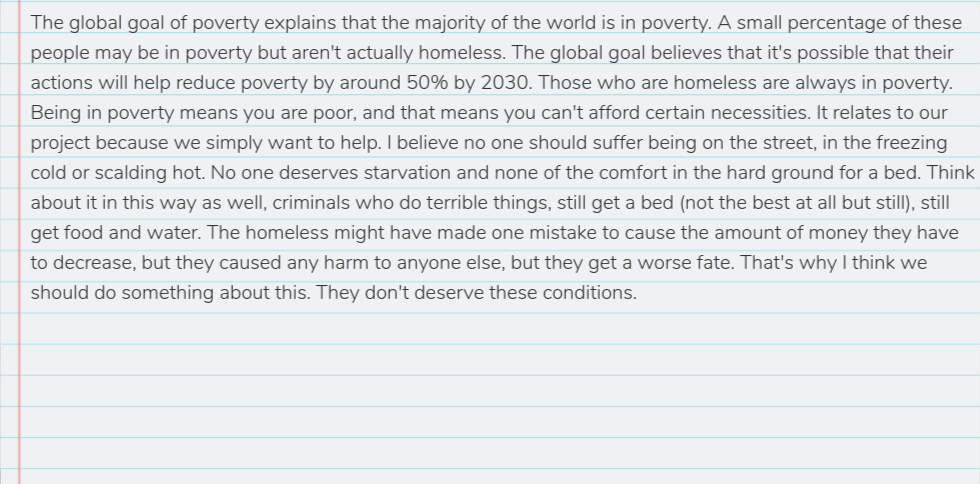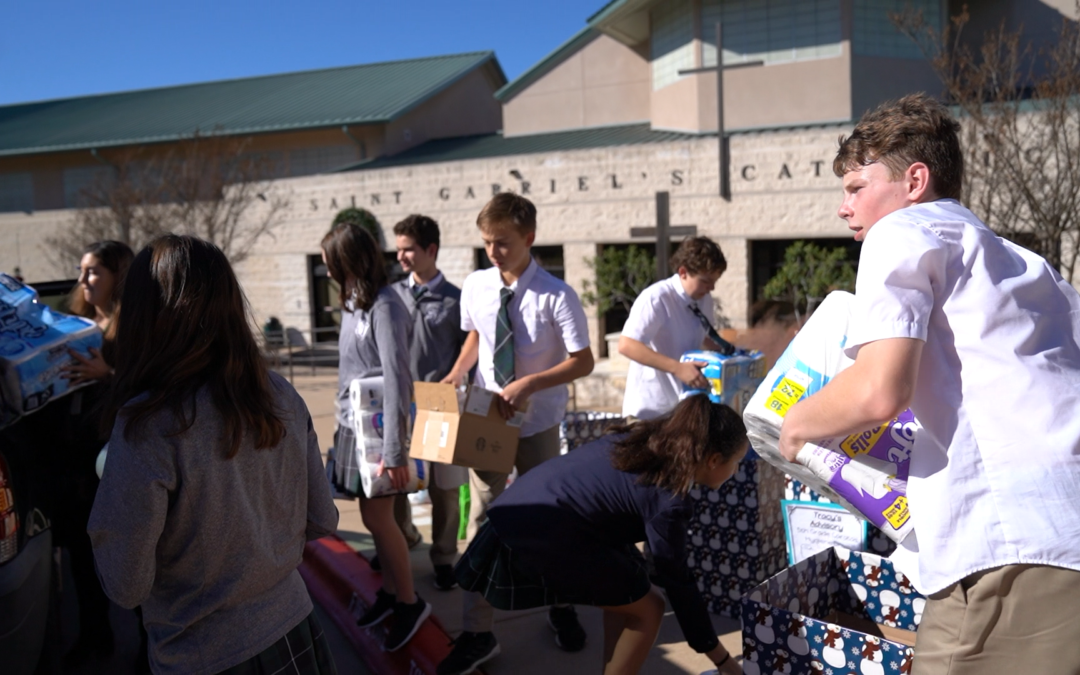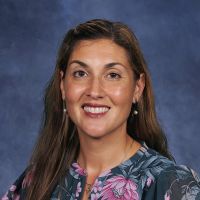Prior to starting the school year in 2019, I spent a lot of time thinking about how I could help my students make meaningful connections to real world applications of math, while also building empathy. Implementing a project of this sort does not always lend itself to the content demands of a math class. That said, the events that unfolded in Austin that summer and fall created a natural opportunity that I wanted to introduce in my 8th grade Algebra classes and that directly linked to their work with our local Mobile Loaves and Fishes’ (MLF) truck ministry. This MLF ministry goes out to the city of Austin seven days a week, 365 days a year to give clothing, sustainable items, and food to our homeless population. Our students rotated once a month preparing sandwiches, loading the truck with clothing donations and other goods, then going with the truck to service the homeless in different neighborhoods. Essentially, I wanted to ignite student inquiry and increase student engagement with both service and content skills.
I aimed to authentically connect the mathematical principles of data analysis to the global concern of homelessness, and to the ways this issue directly impacted our city of Austin. I had an overview of what I hoped this project could be, but I knew I definitely had to be open to the turns it might take, based on my desire to give students that voice and choice that add such value. I could not have predicted the myriad of learning outcomes that resulted when I began.
In the summer of 2019, the Austin City Council voted to roll back ordinances pertaining to homeless sitting, lying, and camping in public places in an effort to decriminalize homelessness. A few months later in October of that year, bans were put back into place. Austin has a little over 3,000 people without homes in our city that would be impacted by these changes. Ripe with all of this information, I collected news stories from the Austin American-Statesman and our local KVUE station that I compiled into our Google Classroom to make the information easily accessible to students.
As a way to spark curiosity and discussion, I showed news clips from KVUE, allowing students a space to begin to think critically about the homelessness situation in our city. The students’ passion for this topic was clear. Directly relating this topic to the objectives of algebra I also infused ways for students to gain practice in reading and interpreting charts, graphs, and other representations of authentic statistical data. I loved seeing my students’ interest and drive grow. Taking their lead, I continued forward with developing this project-based learning around homelessness.
Each Algebra class worked together to generate a driving question to guide the project: (1) How can we use math to increase our understanding of and help the homelessness crisis in Austin? Next, students researched the UN Global Goals concerning poverty, hunger, education, and equity to determine how best to frame their work. Each class decided that this project best connected with the UN’s number one global goal of ending poverty, and began delving into the data.
As students worked in groups to engage the resources provided, they began to brainstorm how they could help the community. They gathered and compared data at an international, national, state, and local level, under the umbrella of their driving question and the global goal of no poverty. Students prepared presentations (see examples here and here) that they shared with one another highlighting the context, the research, as well as statistical charts painting a picture of homelessness at home and abroad. Following their data analysis, students discovered that they had grown in more than just quantitative skills; they had developed a desire to serve others. They wanted to know what they could do to help.

Student reflection on global poverty
I guided this conversation with a Service Learning paradigm, shifting away from ways they could “fix” or “help” the problem, to one that focused on reaching out and asking the community what is needed. Students researched and found that providing backpacks for the homeless would be a good route. After attempting to reach out to certain organizations (through my email), we soon realized this may not work. We then began to target local organizations in our community. We received an enthusiastic response from Caritas of Austin, an organization whose mission is to prevent and end homelessness for people in the greater metro area. This response led to the opportunity to extend work into a Service Learning effort.
A representative from Caritas came to St. Gabriel’s to share with our 8th grade students the ways that Caritas helps individuals and families establish a place of residence, and the efforts that support their success in transitioning clients to a new home. Some of the greatest needs, she told the students, are simply provisions that most of us take for granted: a stocked pantry, dry goods and other supplies needed for daily living.
True to the heart of our school, the 8th graders enthusiastically jumped at the chance to contribute. They organized efforts to both inform the middle school student community about what they had learned, share their newfound data, and invite participation in a drive to collect hygiene items, which they learned from Caritas was the greatest need at that time. Grade levels (5th-8th) were each assigned a different collection item and representatives from math classes addressed the student body about the effort. Our middle school collected just over 400 pounds of hygiene supplies that went to serve the community. Further, many of our students decided to continue their connection with Caritas and serve during Thanksgiving break.
I came away with a deeper appreciation of how meaningful it is to apply content to a real-world context, and the positive educational and social-emotional impact this connection has on our students. They relish these opportunities to think deeply about helping others. While I had parameters and a rubric to guide them, I gave my students a lot of space to see where their hearts and minds led them. This relinquishing of full control can feel quite scary, especially for a math teacher, but if you try it, I believe that your students will amaze you.




